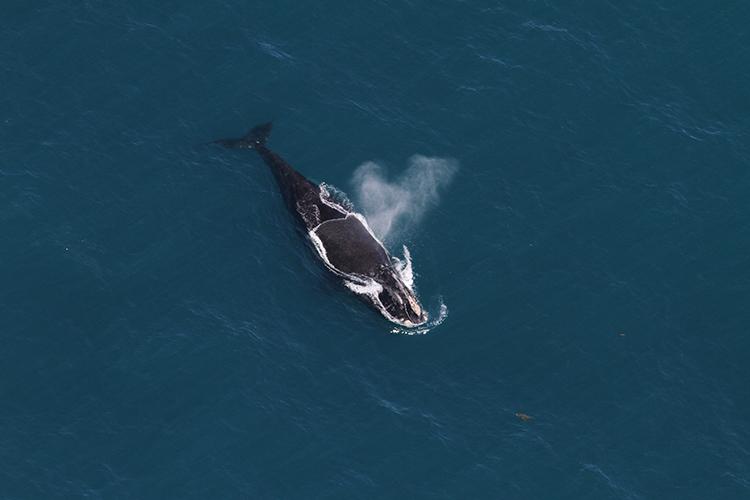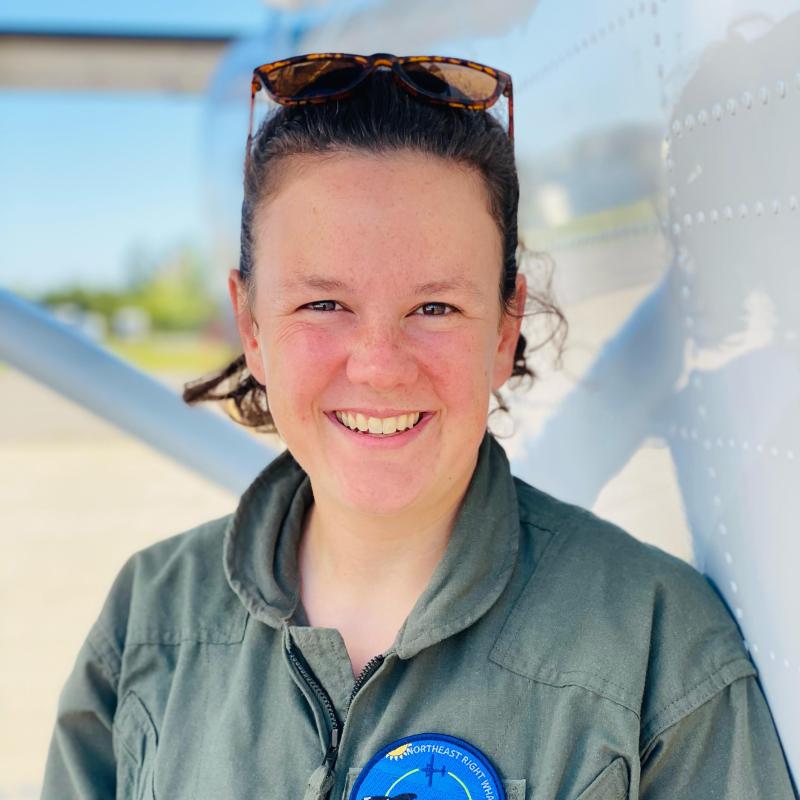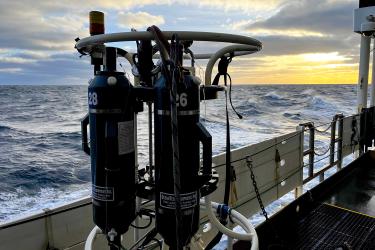On November 20, 2023, I took to the skies with four others to conduct our Large Whale Aerial Survey. Our goal: find and document large whales, in particular endangered North Atlantic right whales. Our year-round surveys use a NOAA Twin Otter plane to systematically monitor hundreds of miles of water during each survey. We conducted this particular survey south of Long Island, New York. During our 5-hour survey, we spotted a right whale traveling southwest. Spotting them can be difficult because they sometimes dive for 25 minutes or more, only to surface for a few minutes to breathe. Thankfully, this whale was only diving for 10 minutes before returning to the surface, allowing us to take photos.
Back at the lab, we were excited to match this right whale to a female known as Fenway, or EgNo 2791. This was quite interesting because she had been spotted just 14 days earlier off the coast of Halifax, Nova Scotia by Canada's National Aerial Surveillance Program. Video taken from that sighting allowed our colleagues at the Department of Fisheries and Oceans to identify her. These sightings of Fenway chronicle her movements into, around, and out of, the Gulf of St. Lawrence, located off the coast of Quebec, Canada. Thanks to aerial surveys, we know that she has returned to the Gulf each summer to feed since 2016!
How We Identify Right Whales
We identify right whales by taking photos of their heads and comparing them to the right whale photo catalog curated by our partners at the New England Aquarium. Right whale heads have patterns of raised skin on their heads called callosities. Each pattern is as unique as a fingerprint. With a sighting and good pictures, we can track Fenway and other whales’ movements over time and learn about their lives. Photo identification is the least invasive—but still most effective—method for tracking right whales.
Fenway’s Name and History
Fenway was first documented in 1997. She got her name from the resemblance of her callosity pattern to the shape of a baseball bat. Her name is an ode to the famous Fenway Park in Boston, Massachusetts. She has now had four known calves. The most recent calf was spotted with her off Cumberland Island, Georgia, on January 11, 2024!
Fenway’s Sightings in 2023 and 2024
Because of our collaboration with the Canada's National Aerial Surveillance Program, Department of Fisheries and Oceans, and Florida Fish and Wildlife Conservation Commission’s Aerial Survey Team, we’ve been able to establish a timeline for some of Fenway’s movements:
- April and May, 2023: We spotted her in an aggregation of other right whales about 150 miles east of New York
- Late May, 2023: Our Canadian colleagues spotted her in the Gulf of St. Lawrence and continued to see her there throughout the summer
- September, 2023: Our Canadian colleagues last spotted her in the Gulf of St. Lawrence
- November 6, 2023: Our Canadian colleagues spotted her about 35 miles southeast of Halifax, Nova Scotia
- November 20, 2023: We saw her in the New York shipping lanes 60 miles east of Sandy Hook, New Jersey
- January 11, 2024: Our Florida Fish and Wildlife colleagues spotted her with a calf off Cumberland Island, Georgia
We are THRILLED that she has given birth again and look forward to documenting Fenway and her new calf’s movements to their feeding grounds in the coming months! For current sightings and acoustic detections of right whales in the United States and Canada, check out WhaleMap!
Currently, there are approximately 360 right whales, including fewer than 70 reproductively active females. Human impacts continue to threaten the survival of this species. That makes documenting and monitoring Fenway and other right whales a critical part of NOAA Fisheries’ North Atlantic Right Whale Road to Recovery.






